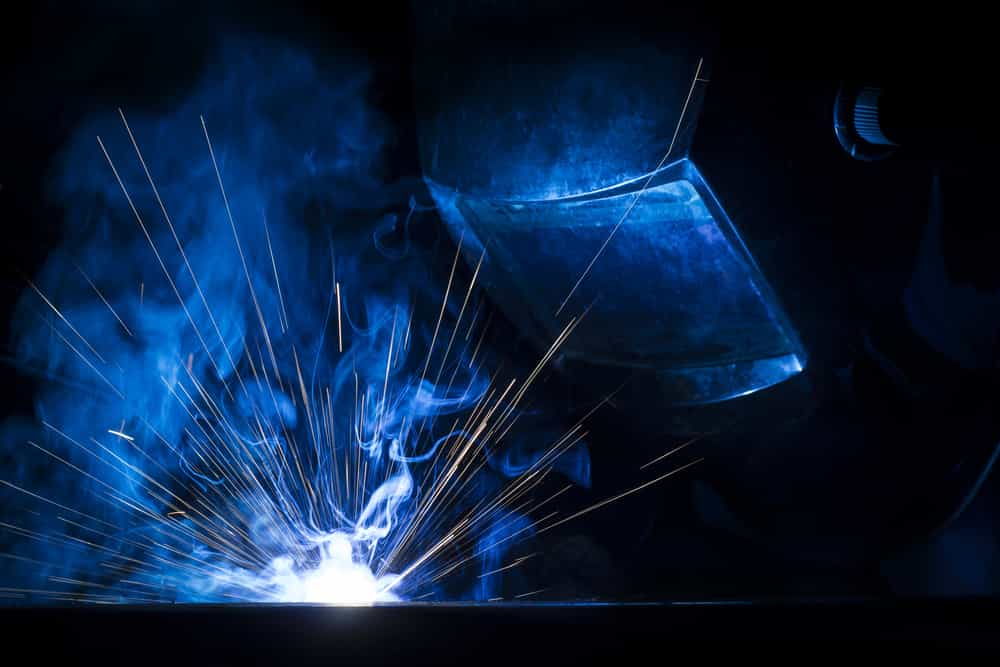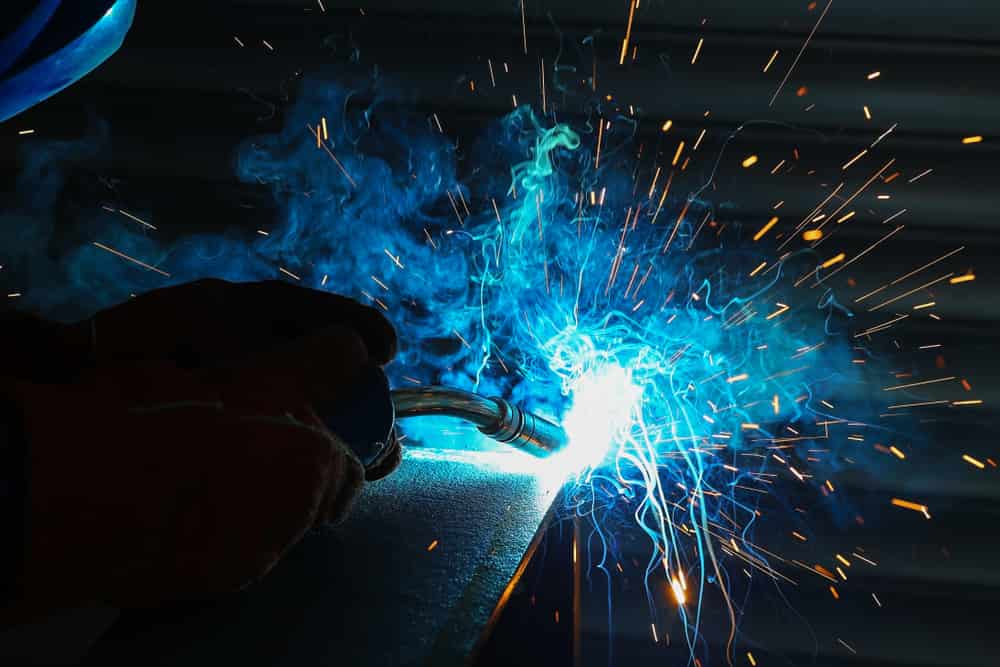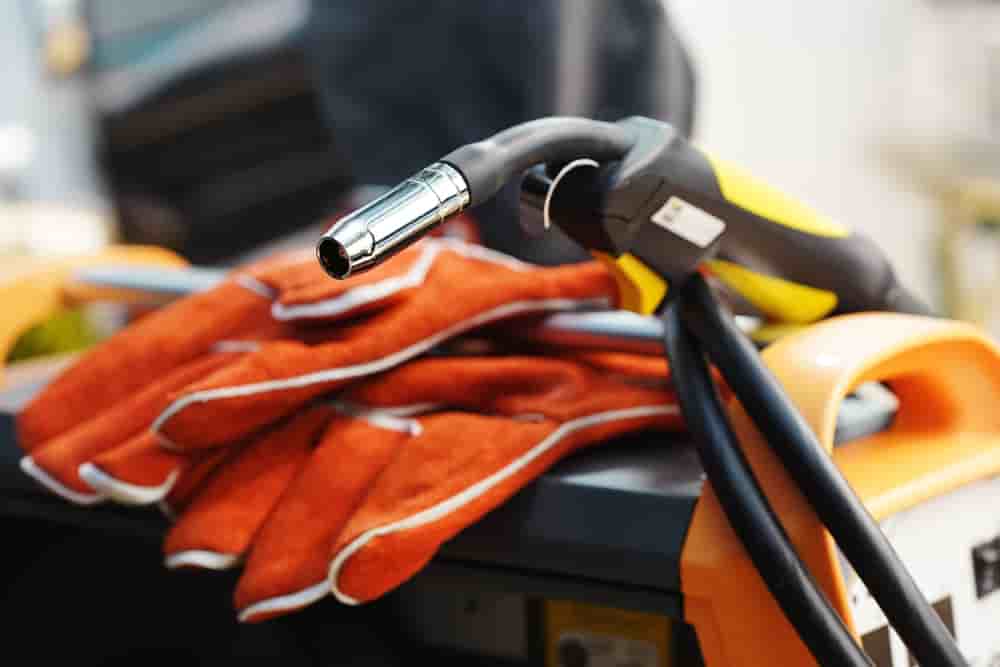If you are looking to start welding or have just started, Wire Feed Welding is the easiest to get your hands dirty with.
Wire feed welding otherwise known as MIG (Metal Inert Gas) or GMAW (Gas Arc Welding) is a type of welding used to join metal by feeding filler material with the help of an electric arc.
When you are learning how to use a wire feed welder, it is very important to choose the machine wisely.
Choosing an easy machine to start with will lower your learning curve significantly since they are easy to get started with compared to other types of welding like stick welding etc.
Wire Feed Welding machines are designed for light welding and are mainly used to join non-ferrous materials.

Contents
Advantages of Wire Feed Welding
Apart from being the most beginner-friendly welding technique, Wire Feed Welding has many advantages
1. They work remarkably well with thin metals. Other types of welding techniques are not usually used for thin metals as they are very difficult to control.
2. Wire Feed Welding has an upper hand when used to weld aluminum. Shielding gas(Inert gas) which is compressed and piped out of the welding gun shields the aluminum from reacting with oxygen thus resulting in neat looking welds.
3. The Wire Feed welders are much efficient than their counterparts since it doesn’t require you to stop and replace the burnt-out electrode by halting the process. Also, The machine does not require any expertise and can be plugged into an ordinary wall outlet.
Uses of Wire Feed Welding
This welding technique is often used by hobbyists, farmers, and amateur welders as it is very easy and is usually compared to a glue gun, but thousands of degrees hotter.
Wire feed welding is mainly used for all sorts of repair works.
Rust, oil, dirt, and other contaminants need to be cleaned off the surface to ensure maximum efficiency.
If you have good hands with this welding process, you can try joining a welders union or even apply for a welding job overseas.
Working
Like any other welding technique out there, using a filler material to join the base metals.
When you press the trigger,
The power supply begins and the metal is melted using an electrical arc. The arc is the result of passing the electricity from the electrode.
The shield gas begins to flow
The continuous supply to the electrode heats the arc which melts the metals and together forms a weld joint.
In welding, there are two types of techniques, you either push the wire or you pull the wire.
In Wire Feed Welding or as otherwise known as MIG Welding you push the wire towards the metal on the other hand In stick welding you pull or drag the wire towards you.
We also have to make sure that the travel angle is in the range of 5 to 15 degrees.

As keeping it in this range results in the least amount of spatter and high penetration levels.
Spatter is a welding defect, which causes several issues and sometimes can be very harmful.
They are small molten metals globs and stick onto anything as they are liquefied.
If they land on you, they’ll burn your skin. If they land on your work, it’ll be quite a hassle to get it off it.
The length of the wire which sticks out of the welding gun plays a major role in how effective the wire feed welder is and also ensures arc stability.
The best-recommended length is 3/8th of an inch or 3 quarters on an inch long sticking out of the machine.
When getting started with wire feed welding, you first need to select a wire.
These two wires are the most common one used
- ER70S – 3
- ER70S – 6
The ER70S – 3 is a wire which can be used for any type of welding and favored most of the time, while the ER70S – 6 is mainly used to work with rusty metals i.e for repair and maintenance welds which require more de-oxidizers.
The right wire-speed also needs to be set up.
Some trial and error may take to get it right, once set you can tackle your future problems which may be caused by a bad setup.
Shield Gas is another important component of a wire-feed welder and choosing the correct gas is necessary as choosing the wrong gas can lead to loose welds and may generate harmful gases.
For minimal spatter and best welds, a combination of 75% Argon(Ar) and 25% of Carbon Dioxide(CO2) is optimal.
Choosing the right shield gas is very important as they directly affect your weld process.
Similar to shielding gas, The combination of current and voltage must be perfected as well.
Practicing the whole procedure can greatly help in determining what works for you.
The voltage and current are adjusted based on the thickness of the wire.

Safety
Although wire-feed welding is the easiest to get started, you have to make sure that you have taken the maximum safety as this process is very delicate.
The electric arc may not be stable and welders are advised to put on flame-resistant clothing.
This type of welding also generates a lot of heat resulting in heat burns and radiation burns.
For hands, leather gauntlets are advised over gloves.
Welding usually produces bright light which is not safe for the naked eyes and thus the welding helmet comes into play by protecting the eyes as well as by providing a breathing system that otherwise is contaminated by small metal particles and other specks of dust.
Following a strict safety regulation will be a good routine, and will reduce the risks of any unfortunate events at the workplace.
Checklist for Wire Feed Welding
- Make sure that the machine is from a well reputed welding brand.
- Before directly jumping into your machine, make sure you read through the manual and completely understand how to make the best adjustments.
- Understanding how the welding process work
- Appropriate protective pieces of equipment are a must and make sure this information is passed onto and followed by your co-workers.
- Check if the weld made is clean or resulted in a bad weld.
Conclusion
Using a wire feel welder is the best choice if you are a beginner or just looking to get into hobby welding.
This technique can be picked up very easily with minimal knowledge and a few practical welding skills.
One can move onto other forms of welding after getting started with wire feed welding.
